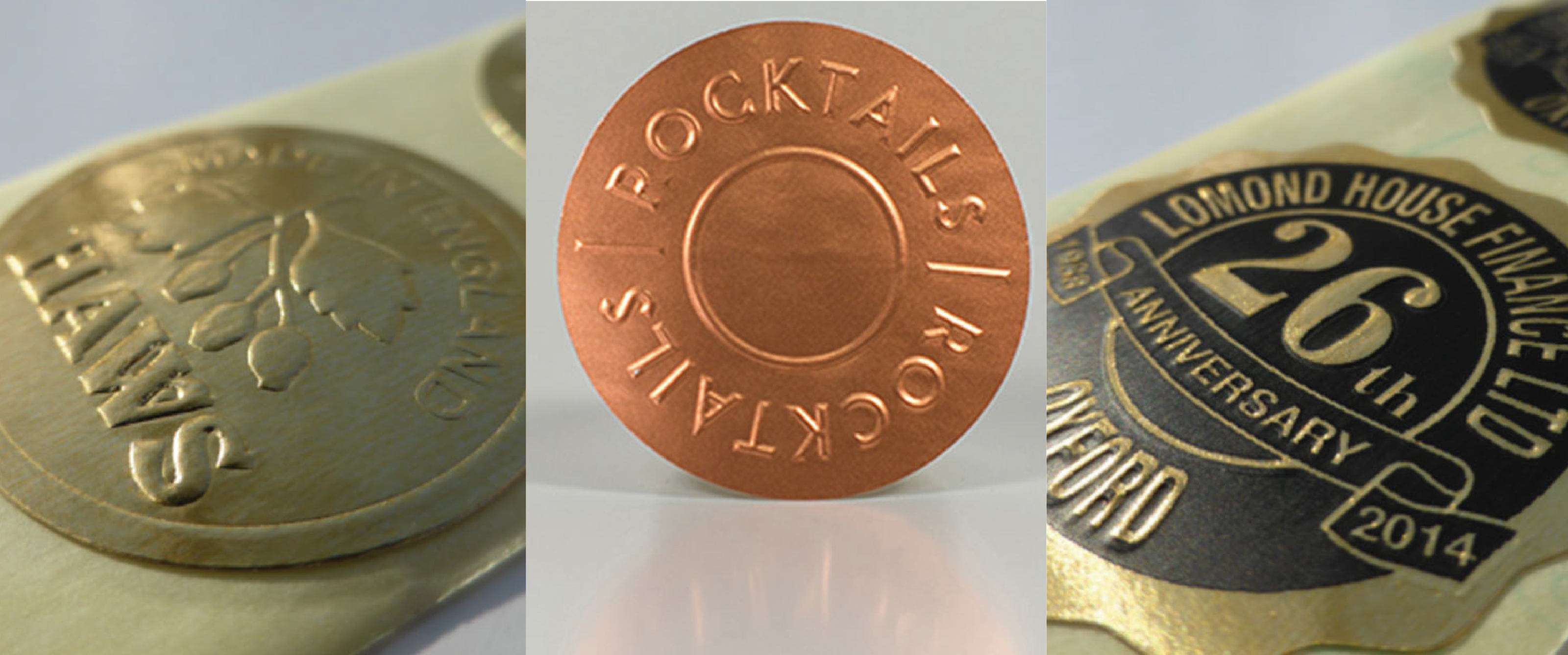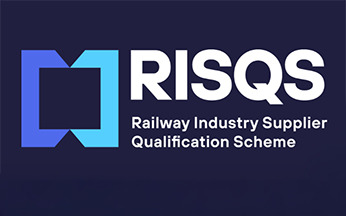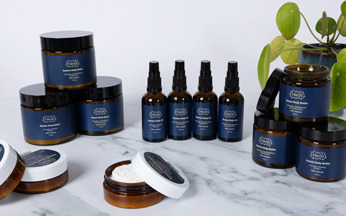How to raise your company profile with embossed labels
If you want to raise the profile of your labels to make them stand and be seen, you should consider embossing them.
In the world of product packaging, standing out on the shelf is not just a goal—it's a necessity. As a business owner or marketing professional, you understand that the first impression can make all the difference between a product that lingers on the shelf and one that makes it into the shopping cart. One way to enhance your products' appeal is through the tactile allure of embossed labels. Embossing is more than a design choice; it's a strategic branding decision that can elevate your products above the competition.
In this article, we'll dive into the details of raised stickers, blind embossed labels, embossed adhesive labels, and textured stickers, and why they might just be the game-changer your brand needs.
The Appeal of Embossed Labels
Embossing is a printing technique that creates a raised or three-dimensional image on a label. This effect is achieved by pressing the label material between two dies—one raised and one recessed—under high pressure. This process not only adds a visual pop to your label but also invites customers to touch and feel the quality of your product through its packaging.
Why Texture Matters
Humans are sensory creatures, and touch plays a pivotal role in our perception of quality. A label with texture not only draws the eye but the tactile interaction with a textured sticker or label can create a memorable experience, making your product more likely to resonate with potential buyers.
Branding with a Touch of Class
Blind embossed labels, where the embossing is the same colour as the label material, exude an air of sophistication and subtlety. This technique is often used for premium products as it conveys a sense of luxury and exclusivity without the need for bright colours or intricate designs.
The Technical Side
The Embossing Process
The embossing process begins with the creation of custom dies based on the desired design. These dies are then mounted onto an embossing press. As the label material is fed through the press, it is squeezed between the dies, and the design is imprinted onto the material, resulting in the raised effect.
Where embossing is not suitable, similar effects can be achieved with inks and varnishes to achieve a raised textured effect on labels. For example on self-adhesive labels with a raised tactile or Braille finish. This Tactile effect is created using a special varnish. Please take a look at our article ‘Tactile Warning Labels & Braille”
Material Considerations
Not all materials are suitable for embossing. To achieve the best results, it's essential to select materials that can retain the embossed shape without tearing or distorting. Paper labels are commonly used for embossing due to their flexibility and ability to hold the design. However, certain coated materials and metallic foils can also be used, Stewart Serls our Commercial Director can help take you through the process and help you select the right materials to achieve the impact you are looking for.
Designing for Embossing
When designing for embossing, there are several factors to consider to ensure that the final product meets your expectations.
Keep It Simple
The most effective embossed designs are often the simplest. Intricate details can be lost in the embossing process, so it's best to opt for bold, clear designs that will make a strong impression.
Consider the Overall Package
Embossed labels should complement the overall packaging design. Consider how the embossed elements will interact with other design features, such as colour, typography, and graphics.
Applications of Embossed Labels
Embossed labels can be used across various industries for different purposes. Let's explore a few applications where embossed labels shine.
Wine and Spirits Bottles
Embossed adhesive labels are particularly popular in the wine and spirits industry, where the label often serves as a key factor in a consumer's purchasing decision. An embossed label can communicate the craftsmanship and quality of the beverage inside.
Specialty Foods and Gourmet Products
For products like artisanal cheeses, chocolates, and premium condiments, embossed labels can reflect the care and attention that goes into the product's creation.
Health and Beauty Products
In the health and beauty sector, embossed labels can add a tactile dimension to products such as perfumes, lotions, and cosmetics, enhancing the user's experience even before they use the product.
Promotional Products and Events
Textured stickers and raised stickers are excellent for promotional events, product launches, and branding campaigns. They grab attention and can leave a lasting impression on recipients.
Conclusion: The Impact of Embossed Labels
In the competitive landscape of retail and product marketing, embossed labels offer a tangible advantage. They can elevate your product's appearance, create a memorable brand experience, and ultimately, influence purchasing decisions. By incorporating raised stickers, blind embossed labels, embossed adhesive labels, or textured stickers into your product packaging, you can add depth—both literally and figuratively—to your brand's presentation.
Embossed labels make a truly lasting impression, whether they are incorporated within the label design itself or created to produce a 'blind' embossed effect.
If you're ready to make your labels pop and your brand stand out, consider the power of embossing. It's not just an aesthetic choice; it's a strategic move towards capturing attention and captivating your audience in a crowded marketplace.
Choosing the Right Label Partner
To achieve the best results with embossed labels, it's crucial to work with a label manufacturer that has experience with this technique. At Label-form we have 60 years of experience working in all sectors of the label industry. We can advise you on every aspect and will help you navigate the design and material selection process and ensure that the final product aligns with your vision.
To find out if an embossed label is the perfect solution for you please get in touch or call Stewart Serls Tel : 01628 782082
Other News And Projects You May Be Interested In
-
Annual Christmas Holiday Shut down Dates We would like to thank all our customers for their continued support and wish you all...
-
The Railway Industry Supplier Qualification Scheme - RISQS In January 2025 Label-form became RISQS Compliant. About RISQS – The rail industry is in a...
-
Enhance Your Hair and Skin Care Labels with Digital Precision Unlock the future of cosmetic packaging with digital printing. As the hair and skin care industries...



